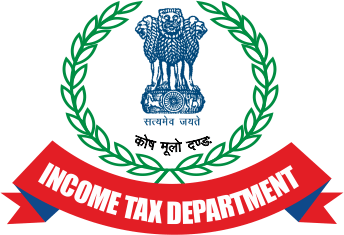Welcome to Daily Banking Digest, your premier source for the latest news and insights on March 31, 2024, focusing on banking, the economy, and finance. Our platform offers a comprehensive overview of the day’s most critical financial stories, market trends, and economic developments. Whether you’re a professional in the financial sector, an investor monitoring market movement, or someone interested in staying informed about the economic landscape, Daily Banking Digest provides reliable, up-to-date information.
Join our Telegram Channel for Daily PDF in your Inbox – Click Here
Table of Contents
City Union Bank Achieves Landmark ₹1 Lakh Crore Total Business in FY24
City Union Bank (CUB) has surpassed the ₹1 lakh crore mark in total business for the first time in its 120-year history. This milestone was achieved in FY24, with the bank’s total business growing by 12-15% compared to the previous year. CUB is now larger than Tamilnad Mercantile Bank but smaller than Karur Vavya Bank in terms of business size.

Key Points:
- Total Business: CUB’s total business crossed ₹1 lakh crore in FY24.
- Growth Rate: The bank’s total business grew by 12-15% in FY24.
- Comparison with Peers: CUB is larger than Tamilnad Mercantile Bank but smaller than Karur Vavya Bank in terms of business size.
- New Office: CUB opened its newly constructed office, CUB Bhavan, in Chennai.
- Branch Expansion: The bank recently opened its 800th branch in Ayodhya, Uttar Pradesh.
CBIC’s Revised Guidelines for GST Investigations: Deadlines and Procedures
The Central Board of Indirect Taxes & Customs (CBIC) has issued new guidelines to streamline GST investigations. These guidelines aim to reduce multiple investigations by different offices, assign responsibilities for approving investigations, and establish timelines for concluding investigations. The guidelines also emphasize the use of official letters instead of summons for certain entities and discourage requesting information already available on the GST portal.

Key Points:
Multiple Investigations: – GST assessees may face multiple investigations by one office only. – The Principal Commissioner must coordinate with other investigating offices to consolidate investigations.
Approval of Investigations: – Investigations must be approved by the Principal Commissioner. – Consent from zonal Principal Chief Commissioners is required for investigations involving: – Interpretation of tax/duty on new sectors/commodities/services. – Big industrial houses and multinational corporations. – Sensitive matters or matters with national implications. – Matters before the GST Council.
Listed Companies and Government Entities: – Official letters should be used initially to request information from listed companies, PSUs, and government entities. – Written reasons are required for any divergence from this practice.
Information Requests: – Information available on the GST portal should not be requested through letters/summons. – Letters/summons should not be used to seek information in specified formats.
Investigation Timeline: – Investigations must be concluded within one year. – Show cause notices should not be delayed after the conclusion of the investigation.
Indian Economy Projected to Surpass 8% Growth in FY24: FM Sitharaman
Finance Minister Nirmala Sitharaman anticipates India’s economy to grow by 8% or more in the final quarter of FY24, resulting in an overall growth rate of 8% or higher for the fiscal year. This growth is attributed to the consistent growth of over 8% in the previous three quarters.

Key Points:
- Economic Growth: The Indian economy is projected to grow at 8% or above in Q4 of FY24, leading to an overall growth rate of 8% or higher for the fiscal year.
- Consistent Growth: The economy has experienced three consecutive quarters of growth over 8%.
- Credit to Citizens: The Finance Minister credits the Indian people for their energy and contributions to maintaining India’s status as the fastest-growing economy.
PNB Housing Finance’s Debt Rating Upgraded to AA+ by CARE, Outlook Stable
PNB Housing Finance’s ratings have been upgraded to AA+ from AA by CARE Ratings, with a stable outlook. This upgrade is attributed to the company’s improved asset quality, strong market position, and profitable business growth.

Key Points
Ratings Upgrade – PNB Housing Finance’s ratings upgraded to AA+ from AA by CARE Ratings. – Upgrade applies to various facilities and debt instruments.
Improved Asset Quality – Gross NPA ratio reduced to 1.73% as of December 2023, compared to 8% in March 2023.
Strong Market Position – Third largest housing finance company in India. – Well-diversified resource profile.
Focus on Affordable Segment – Exposure to affordable segment at Rs 1,145 crore, representing 1.8% of total loan assets. – Performance of affordable portfolio remains a key monitorable.
Improved Profitability – Return on total assets at 2.09% in the first nine months of FY24. – Profitability expected to improve further with scale-up in affordable portfolio.
Conditions for Further Upgrade – Significant improvement in scale of operations, asset quality, and profitability. – Return-on-assets crossing 2.5%.
Conditions for Downgrade – Capital adequacy ratio falling below 20%. – Asset quality deterioration (GNPA ratio above 3%). – Profitability decline. – Construction finance portfolio exceeding 10% of total asset base.
Asset Base Growth – Total loan assets at Rs 62,337 crore as of December 2023. – Growth in asset base accelerated in recent years. – Strategic reduction in wholesale book, focus on retail loan book. – Retail loan book expected to grow 17% in FY25.
Affordable Housing Segment – Affordable housing finance segment expected to gain traction. – Incremental disbursements in this segment estimated at 5-10%.
SalarySe to Introduce Credit-on-UPI Service in April, Aiming for 100,000 Initial Customers
Fintech startup SalarySe plans to launch a credit-on-UPI product in April, targeting one lakh salaried employees initially. The product will leverage pre-sanctioned credit lines at banks, enabled by the Reserve Bank of India’s recent allowance for UPI transactions. SalarySe aims to cater to one crore salaried employees in the next three years.

Key Points:
Target Customer Base: – One lakh salaried employees initially – Focus on IT services, manufacturing, and sales-driven companies
Product Launch: – Scheduled for April 2024 – Partnerships with 20-odd corporates with around 100,000 employees
Funding: – Secured $5.25 million in seed funding from Surge and Pravega Ventures
Customer Acquisition: – Low customer acquisition costs due to access through employers
Underwriting Process: – Efficient underwriting process enabled by employer access
PFRDA Enforces Two-Factor Aadhaar Authentication for Central Recordkeeping Agency Access from April 1
The Pension Fund Regulatory and Development Authority (PFRDA) has implemented mandatory 2-Factor Aadhaar Authentication for accessing the Central Recordkeeping Agency (CRA) system for National Pension System (NPS) activities. This measure aims to enhance security and protect the interests of subscribers and stakeholders.

Key Points
1. Mandate for 2-Factor Aadhaar Authentication – PFRDA has mandated 2-Factor Aadhaar Authentication for accessing the CRA system for NPS transactions.
2. Purpose of the Mandate – To bolster security features and protect the interests of subscribers and stakeholders.
3. Implementation Date – The new regime will be effective from April 1, 2024.
4. Impact on Government NPS Sector – The new regime is expected to particularly impact the Government NPS sector, as two-factor Aadhaar authentication has not been introduced for this segment until now.
5. Benefits of 2-Factor Authentication – Significantly reduces the risk of unauthorized access to the CRA system. – Safeguards NPS transactions and protects the interests of subscribers and stakeholders.
6. Integration with Existing Login Process – Aadhaar-based login authentication will be integrated with the current User ID and Password-based login process, enabling 2-Factor Authentication.
7. Growth of Pension Assets – Pension assets under management have been growing at a Compounded Annual Growth Rate (CAGR) of over 20 percent in the recent decade. – Overall NPS assets, including Atal Pension Yojana, have crossed ₹ 11.56 lakh crore as of March 16, 2024.
Foreign Investors Return with a Surge: ₹2 Lakh Crore Invested in Indian Equities in FY24
Foreign Portfolio Investors (FPIs) have made a significant return to the Indian equity market in 2023-24, injecting over ₹2 lakh crore. This is driven by optimism surrounding India’s robust economic fundamentals amidst global challenges. The outlook for 2025 remains cautiously optimistic, with expectations of sustained FPI inflows supported by policy reforms and economic stability.
Key Points
FPI Inflows – FPIs invested ₹2.08 lakh crore in Indian equities and ₹1.2 lakh crore in the debt market in 2023-24. – This marks a reversal from the outflows witnessed in the previous two financial years.
Factors Driving FPI Inflows – India’s strong economic growth and stability compared to other markets. – Attractive yields on Indian sovereign debt relative to US treasury. – Upcoming inclusion of Indian bonds in JP Morgan’s index.
Outlook for 2025 – Cautiously optimistic outlook with expectations of sustained FPI inflows. – Supported by progressive policy reforms, economic stability, and attractive investment avenues. – Global geopolitical influences may introduce intermittent volatility.
Debt Market Investments – FPIs invested a significant ₹1.2 lakh crore in the debt market in 2023-24. – This is due to attractive yields and strong macros in the Indian economy. – Inclusion of Indian bonds in JP Morgan’s index is expected to attract further inflows.
FPI Activity in 2023-24 – FPIs were net buyers in April-August, investing ₹1.62 lakh crore. – They turned net sellers in September-October, withdrawing over ₹39,000 crore. – Net inflows resumed in November-December, with purchases of ₹66,135 crore. – FPIs sold shares worth ₹25,743 crore in January, but ended the fiscal year on a positive note with purchases of over ₹35,000 crore in March.
PLI and Make in India Schemes to Drive Export Growth in 2024: GTRI
India’s export sector has witnessed significant growth, particularly in electronics, driven by initiatives like PLI and Make in India. However, traditional labor-intensive exports, such as textiles and leather, require revitalization to regain global market share. India’s trade footprint extends globally, with potential for growth in regions like Africa, Latin America, and Central Asia. FTAs with developed countries are crucial for trade liberalization and economic integration. The Red Sea crisis poses challenges for India’s trade, leading to increased shipping costs, delays, and potential cargo losses.
Key Points
Export Performance – India’s export performance has reached an all-time high, particularly in merchandise exports. – Merchandise exports declined by 3.56% from April 2023 to February 2024 compared to the previous year. – Overall export growth for FY2024 is expected to be positive, considering both merchandise and services exports.
Growth in Electronics Sector – Sectors like electronics are showing promise, fueled by initiatives such as PLI and Make in India. – Smartphone exports are expected to surge by 30% and surpass USD 15 billion in FY2024.
Need to Revitalize Traditional Exports – Traditional labor-intensive sectors like textiles, apparel, and leather need to be revitalized to regain lost global market share.
Global Trade Footprint – India’s trade footprint extends to all corners of the globe. – Merchandise trade exceeds USD 10 billion with 32 countries and surpasses USD 1 billion with 82 countries.
Export Potential in Emerging Regions – Africa, Latin America, and Central Asia offer significant export potential. – India’s merchandise exports to these regions amounted to USD 51.2 billion, USD 17.7 billion, and USD 3.8 billion in FY2023, respectively.
Importance of FTAs – India has been actively pursuing FTAs with various countries to enhance its export prospects. – Successfully concluding FTAs with developed countries would signify India’s commitment to trade liberalization and economic integration.
Red Sea Crisis – The Red Sea crisis poses challenges for India’s trade, especially with the Middle East, Africa, and Europe. – The conflict is leading to increased shipping costs, delays, higher insurance premiums, and potential cargo losses.
India’s GDP Projected to Expand by 8% or More in Q4 of FY23: Finance Minister Nirmala Sitharaman
India’s economy is projected to grow by 8% or more in the quarter ending March 31, 2023, and maintain a similar growth rate for the 2023/24 financial year. This growth is attributed to improved inflation management and macroeconomic stability.
Key Points:
- GDP Growth Forecast: India’s GDP is expected to grow by 8% or more in the quarter ending March 31, 2023.
- Year-on-Year Growth: The economy is projected to show the same rate of year-on-year expansion for the 2023/24 financial year.
- Improved Inflation Management: The growth is attributed to improved inflation management and macroeconomic stability.
- GDP Data Release: India’s GDP data for the Jan-March quarter is due to be released on May 31.
- Previous Quarter Growth: India’s economy grew 8.4% in the October-December quarter year-on-year.
- Current Fiscal Year Growth: India’s economy is projected to grow at 7.6% in the current fiscal year to March 31, 2023.
Office Net Lease Transactions Surge 44% to 11.5 Million Square Feet in Q1 2023
Net leasing of office space in eight major Indian cities experienced a significant 44% annual growth in the first quarter of 2024, driven by increased demand from corporates expanding their businesses. The total net leasing reached 11.5 million square feet, the third-highest level in the past five years.
Key Points:
Net Leasing Growth: – Net leasing of office space rose 44% annually to 11.5 million square feet in Q1 2024.
City-Wise Performance: – Bengaluru, Mumbai, Delhi-NCR, and Chennai saw an increase in net absorption, while Pune, Hyderabad, Kolkata, and Ahmedabad experienced a decline.
Gross Leasing: – Gross leasing of office space across eight cities increased by 33% to 20.13 million square feet.
Mumbai’s Surge: – Mumbai witnessed a threefold jump in net office leasing, from 723,735 square feet to 2.47 million square feet.
Bengaluru’s Growth: – Bengaluru’s net absorption of office space more than doubled, from 1.57 million square feet to 3.6 million square feet.
Chennai’s Rise: – Net office space leasing in Chennai surged by 77% to 875,783 square feet.
Delhi-NCR’s Modest Growth: – Delhi-NCR saw a modest 18% growth in net leasing, reaching 1.45 million square feet.
Declines in Other Cities: – Net leasing fell in Pune, Hyderabad, Kolkata, and Ahmedabad, with Kolkata experiencing an 82% decline.
Gross vs. Net Leasing: – Gross leasing includes all leasing activity, while net absorption or leasing refers to new space occupied after adjusting for exits.
Coworking Demand: – Coworking operator The Office Pass reported continued strong demand for flex space solutions in Q1 2024.
IMF Boosts Egypt’s Economic Lifeline with $8 Billion Bailout Expansion
The International Monetary Fund (IMF) has approved an increase in its bailout loan to Egypt from USD 3 billion to USD 8 billion to support the country’s economy, which is facing a severe foreign currency shortage and high inflation. The deal requires Egypt to implement reforms, including floating its currency, reducing public investment, and promoting private sector growth.
Key Points:
IMF Loan Increase: – IMF increases bailout loan to Egypt from USD 3 billion to USD 8 billion. – Egypt to receive USD 820 million immediately as part of the deal.
Reform Plan: – Egypt agrees to float local currency, reduce public investment, and promote private sector growth. – Pound floated and interest rate increased to combat inflation and attract foreign investment.
Economic Challenges: – Egyptian economy hit by government austerity, COVID-19 pandemic, Russia-Ukraine war, and Israel-Hamas conflict. – Houthi attacks on Red Sea shipping routes reduce Suez Canal revenues. – Growth slows to 3.8% in 2022-23, projected to slow further to 3% in 2023-24.
Inflation and Poverty: – Annual inflation rate reaches 36% in February, expected to ease over time. – Currency devaluation and interest rate hike increase financial burden on Egyptians. – Nearly 30% of Egyptians live in poverty.
Government Response: – Finance Minister Maait highlights importance of government’s corrective measures. – Egypt signs aid package with European Union for 7.4 billion euros over three years. – EU fast-tracks 1 billion euros of aid to inject funds into Egypt’s economy.
Kerala Disburses Rs 26,000 Crore to Support Various Sectors in March
Despite facing fiscal pressure, the Kerala government made payments of Rs 26,000 crore in March alone, exceeding the previous fiscal year. The state government effectively managed the financial crisis and has an interim application pending before the Supreme Court regarding borrowing limits. The apex court recently ruled in favor of the state, acknowledging the financial constraints imposed by the Union of India.
Key Points:
- Payments Made: The state government made payments of Rs 26,000 crore in March, higher than the previous fiscal year.
- Financial Pressure: The payments were made despite facing financial pressure.
- Supreme Court Application: An interim application on borrowing limits and other matters is pending before the Supreme Court.
- Apex Court Ruling: The Supreme Court recently ruled in favor of the state, acknowledging the financial strangulation imposed by the Union of India.
- Union of India’s Regulation: The Kerala government alleged that the Union of India was regulating its finances through exclusive powers and imposing a ceiling on borrowing.
Precision Agriculture: Empowering Farmers with Climate Monitoring and Weather Forecasting Tools
Agriculture, a vital economic sector, is undergoing significant evolution driven by increased food demand, favorable trade conditions, and technological advancements. However, climate change poses challenges, impacting crop yields and food prices. Precision agriculture, AI-powered monitoring, big data analytics, and IoT-based smart sensors are emerging technologies that empower farmers to optimize crop production, reduce environmental damage, and mitigate risks.
Key Points
1. Agriculture Market Growth and Challenges – Global agriculture market valued at $13 billion in 2023, with a 9.4% CAGR. – Climate change impacts agriculture, leading to increased food prices and the need for effective practices.
2. Emergence of Precision Agriculture – Precision agriculture uses technology and data to optimize crop production. – Farmers leverage GPS mapping, soil sensors, and drones to analyze crop growing conditions. – Reduces resource usage, contributing to environmental sustainability.
3. AI-Powered Monitoring and Agriculture – AI predicts weather discrepancies, enabling farmers to choose appropriate plants and planting schedules. – Provides timely insights on weather, soil, and vegetation indices. – Equips farmers with information to reduce risks and maximize productivity.
4. Big Data in Precision Farming – Data analytics empowers farmers to predict weather patterns and take preventive measures. – Optimizes resource usage, reduces chemical inputs, and mitigates environmental damage. – Enables energy-saving measures and water conservation.
5. IoT and Smart Sensors for Real-Time Tracking – IoT-based precision farming uses GPS, smart sensors, and drones for crop management. – Provides real-time data on crop status, weather conditions, and soil quality. – Enables farmers to apply inputs where necessary and reduce waste. – Smart sensors track weather patterns and trends for natural disaster management.











